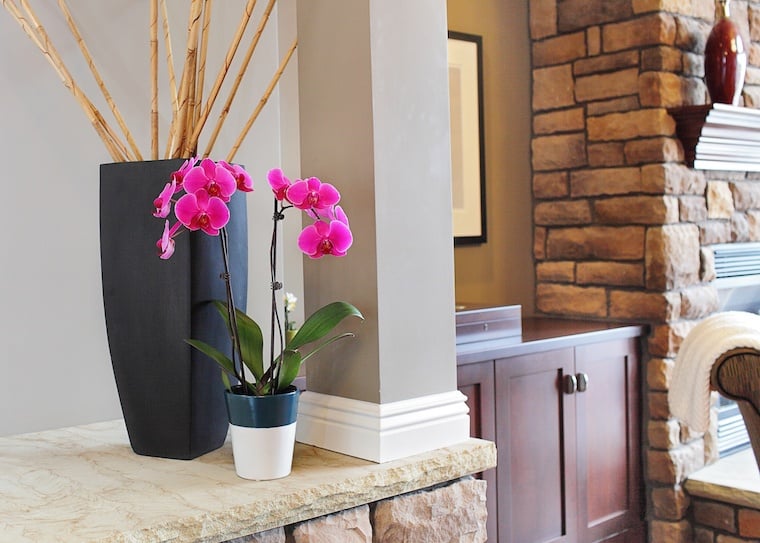
Orchid care is so simple, you don’t need a green thumb to do it. In fact, orchids are perfect for first-time plant owners because they’re such low-maintenance plants.
Follow these steps to help your orchid prosper for months (maybe years) to come.
Watering is one of the most basic steps of orchid care. As with any plant, it’s important to make sure your orchid gets enough water, but not too much. Our ice cube watering method ensures your orchid gets just the right amount of water and that the roots can absorb it slowly. It’s also more convenient—no measuring required!
For a classic orchid, use three ice cubes (¼ cup water) once a week directly on the plant’s potting media. Petite orchids need two ice cubes. For a mini orchid, you’ll need just one ice cube (1 ½ tablespoons water) once a week. This will ensure your orchid is getting all of the hydration it needs to flourish.
Fertilizing your orchid is an important part of orchid care. It helps your orchid rebloom by providing it with the nutrients it would normally find in a tropical environment. Once the blooms are done dropping, fertilize your orchid at least once a month, but no more than every other week. Put your fertilizing solution in a watering can or pitcher with a spout to get close to the bark of your plant. You won’t need to water your orchid on the weeks when you fertilize because your solution is half water, so it already gets what it needs.
When your orchid stops blooming and enters dormancy, it isn’t dead! It’s just resting. Orchids stay in bloom for about three months, then rest for about nine months before reblooming.
You can encourage your orchid to bloom again with a little TLC. Orchids rebloom on old spikes with a new stalk emerging from a triangular node along the stalk. After the blooms have fallen, start fertilizing your orchid every other week. Next, you’ll want to move your orchid to a cooler environment where nighttime temperatures are between 55 and 65 degrees Fahrenheit and leave it there until a new flower spike appears. Continue watering as usual.
After having your orchid for about a year or so, it is a good idea to place it into a bigger pot. This step is essential for orchid care because it gives the plant more space to grow. You can also repot your plant if you are having issues with pests or diseases. Repotting your orchid ensures that you are replacing your depleted medium with a new medium to help it thrive. Our orchid repotting kit contains everything you need to help your orchid prosper, so make sure to order one today!
By following these simple orchid care steps, you can help your orchid flourish throughout the seasons. There are a few extra orchid care tips you’ll want to keep in mind during the summer, such as pest control and keeping your orchid away from direct sunlight to prevent the leaves from getting burnt. During the winter months, you’ll want to make sure you keep your orchid away from draft or heat vents.
Want more orchid care tips? Download our Complete Guide To Orchid Care.

Copyright Just Add Ice® Orchids 2023